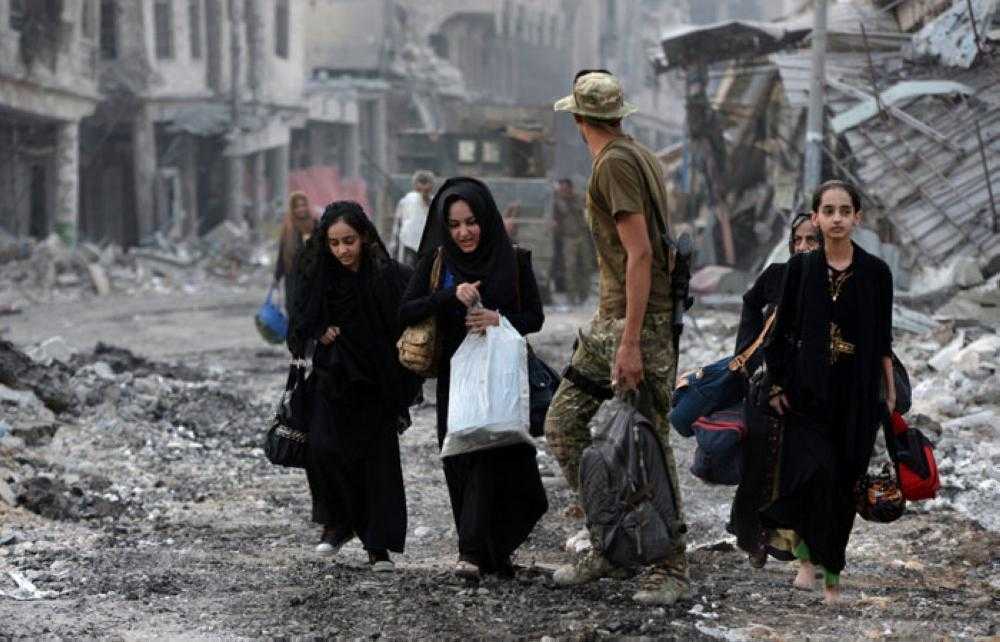Up to 20,000 civilians are trapped in the last ISIS-held areas in Mosul’s Old City, which Iraqi forces are battling to retake, UN humanitarian coordinator in Iraq Lise Grande said Thursday.
“Our estimate at this stage is that in the final pockets of the Old City, there could be as many as 15,000 civilians, possibly even as high as 20,000,” Grande told Agence France Presse.
“The people that are still trapped inside of these pockets are in terrible condition,” facing shortages of food, she said.
“They’re in extreme danger from bombardment, from artillery crossfire. The (ISIS) fighters that are still there are still directly targeting civilians if they try and leave.”
Those in the historic Old City, have been besieged and under fire for longer than those in any other part of Mosul, and the toll is apparent.
Children are emerging bone thin and severely dehydrated, elderly people are collapsing en route. In many cases there is nothing to eat besides boiled wheat.
At a mustering point less than a kilometer from the frontline, residents rattled off the latest prices of basic goods which they said had become prohibitively expensive in the past three months: a kilogram of lentils for 60,000 Iraqi dinars ($51), rice for 25,000 and flour for 22,000.
Mohammed Taher, a young man from the Makawi area of the Old City, said Russian-speaking ISIS militants spread out across the neighborhood had impeded civilian movement.
“It was a prison,” he said. “Five days ago they locked the door on us. They said, ‘Don’t come out, die inside’. But the army came and freed us.”
Shop-owner Adnan dragged himself from the rubble two days in a row after the houses he was sheltering in were bombed, one after the other.
“ISIS forced us out of our home, so we moved to a relative’s house nearby. Yesterday the house was bombed,” he said after the army evacuated him on Monday. “We moved to my cousin’s house and this morning it was also bombed.”
Adnan, who has shrapnel lodged in his skull from an earlier mortar attack, said he survived, with others, by hiding in the houses’ underground cellars.
A European medic at a field hospital said he has seen more severe trauma cases among civilians fleeing the fighting in the past week than he had in 20 years of service back home.
From the mustering point, camouflaged army lorries carry the evacuees across the Tigris river to a security screening center in the shadow of the Nineveh Oberoi Hotel, a former five-star hotel which ISIS once used to house foreign militants and suicide bombers.
More than 4,000 people have passed through that screening center since mid-May, said Lieutenant Colonel Khalid al-Jabouri, who runs the site. In that time, security forces have detained around 400 suspected ISIS members, he said.
“They are wanted so they cross with the civilians like they are one of them,” he told Reuters.
More than eight months since the start of the operation to retake Mosul from the terrorist group, Iraqi forces have pushed ISIS into a shrinking rectangle no more than 300 by 500 meters beside the Tigris river, but slowed their advance on Tuesday out of caution for the civilians trapped there alongside the militants.
